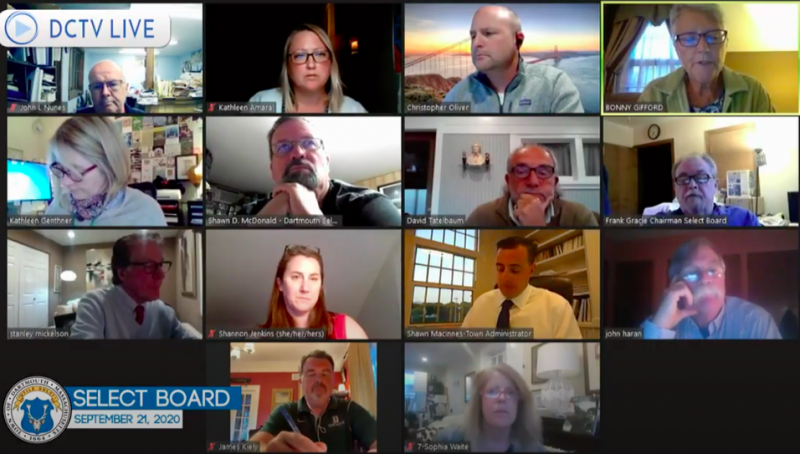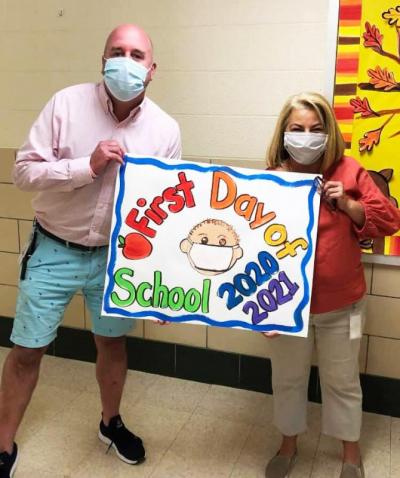HVAC to school: Air quality, class size on admins' minds for hybrid learning
Next week will see the return of teachers and some students to Dartmouth’s public schools as part of the school’s hybrid learning plan, with quite a bit of prep work still to be done.
At a joint meeting with the Select Board on Sept. 21, Business Administrator Jim Kiely said staff have been working since March to not only clear out items, but also ensure air movement and purification and purchase enough cleaning and personal protective equipment supplies.
Since Sept. 15, students have been learning remotely.
Superintendent of Schools Dr. Bonny Gifford at the meeting said staff have been “pretty phenomenal” with the remote start and that the initial transition to virtual learning “is nothing like now.”
Potter School Principal Rick Porter praised his staff and students for what he said was a “very successful” first week of online class.
“Our teachers are like rockstars,” he said, highlighting his staff’s ability to quickly adapt to the increased use in technology. “They’re doing it — they’re reaching kids.”
While school officials say they’re ready to reopen, there are still some concerns.
“We have a lot of 1960s [HVAC] equipment still,” Kiely said. “How long that continues to operate without needing continued maintenance is certainly a concern.”
Thankfully, he said, a lot of the old equipment “still works pretty well” and can still produce a decent amount of airflow.
The main problem is with filtration. To ensure air quality is safe when students return near the end of next week, the district plans to distribute purifiers throughout the buildings.
Select Board member Stanley Mickelson wondered if it was possible for the district to get some sort of grant or rebate on air purification equipment.
“I’m sure there's got to be some grant money,” he said. “I know in our business, there are rebates and they’re pretty substantial.”
Kiely noted that the district is currently looking into potential rebates with Eversource and has received grants worth more than $1 million during the pandemic.
“Without that, I don’t know where we’d be,” Kiely said. “I don’t think we’d be in school without that.”
School Committee Chair Chris Oliver said this was a “perfect example that we need to start looking at our facilities,” noting that “some of these upgrades are going to require a lot of capital and a lot of time and effort to replace them.”
Another issue is getting high schoolers back. Gifford noted that officials still have difficulties with fitting the appropriate amount of students into spaced out classrooms.
According to the superintendent, classroom space is still being reallocated in order to comply with state guidelines.
“There’s been a pretty good overhaul of the buildings,” Gifford said. “But we’ll be continuing with that.”
Once hybrid learning begins, students will start in-person lessons on a staggered schedule in October. Those in Pre-K through Grade 2, plus Grade 6, will start on Oct. 1 or 2 for orientation, depending on their cohort.
The first full week of school for those grade levels will begin on Oct. 5, with Cohort A attending in-person lessons on Monday, Wednesday, and Friday and Cohort B on Tuesday and Thursday. Cohorts A and B will switch days every week.
Each week after that, Gifford said more groups of students will be brought in. By Oct. 19, the superintendent said she anticipates all the schools will be operating under the hybrid model.
“All of this has been very complex,” she said. “But starting Oct. 1, we’ll be bringing groups in.”

















